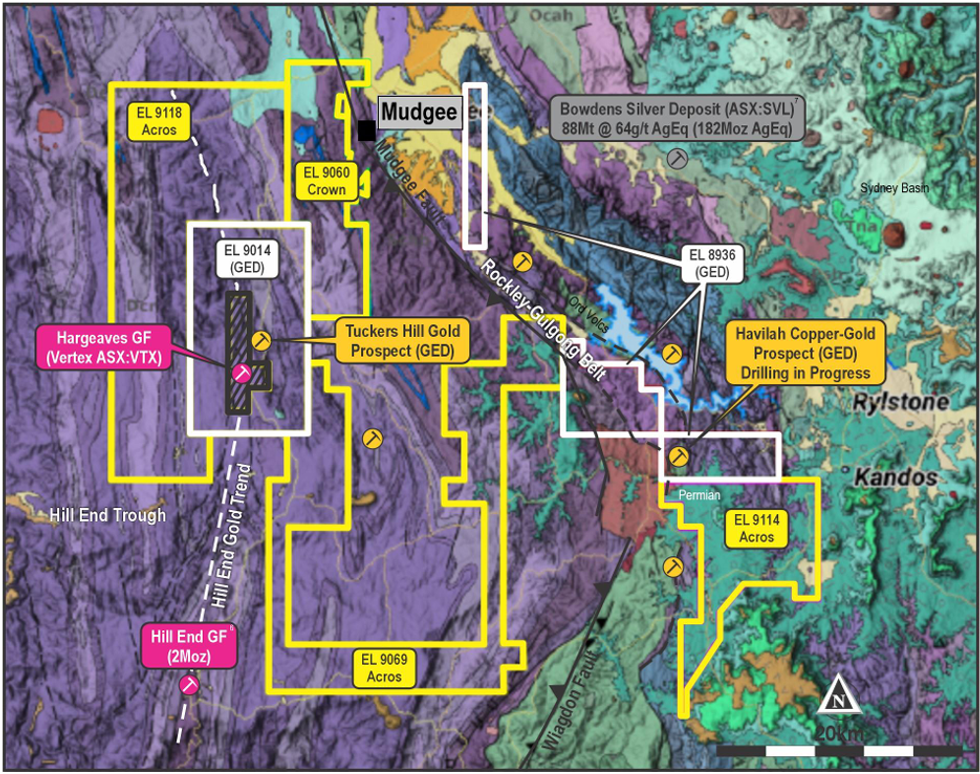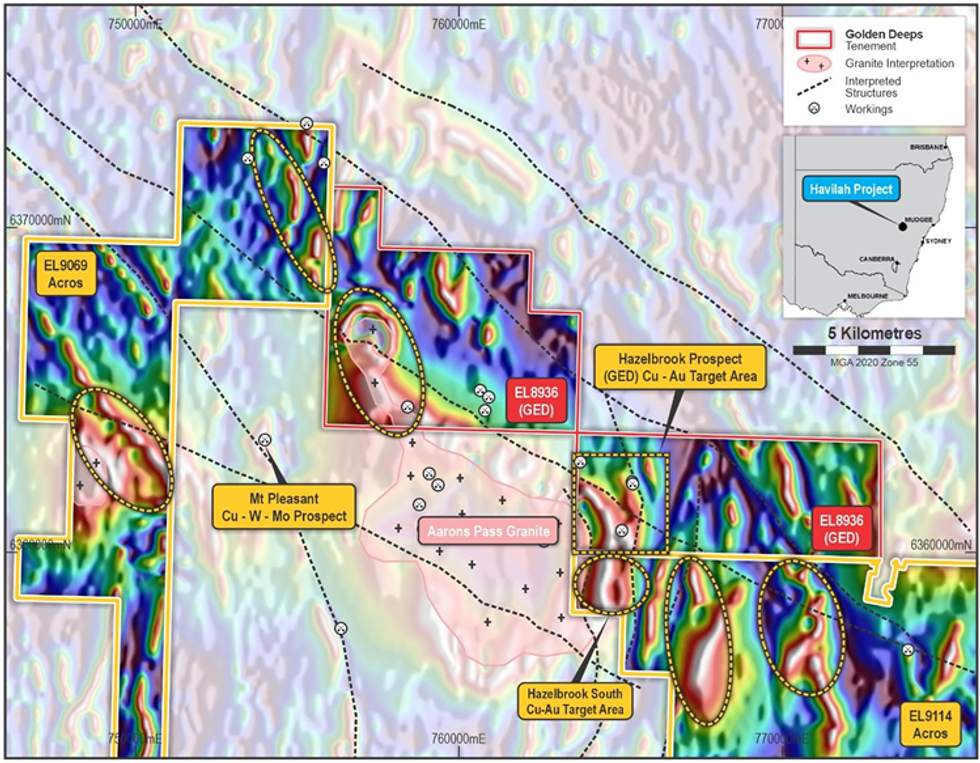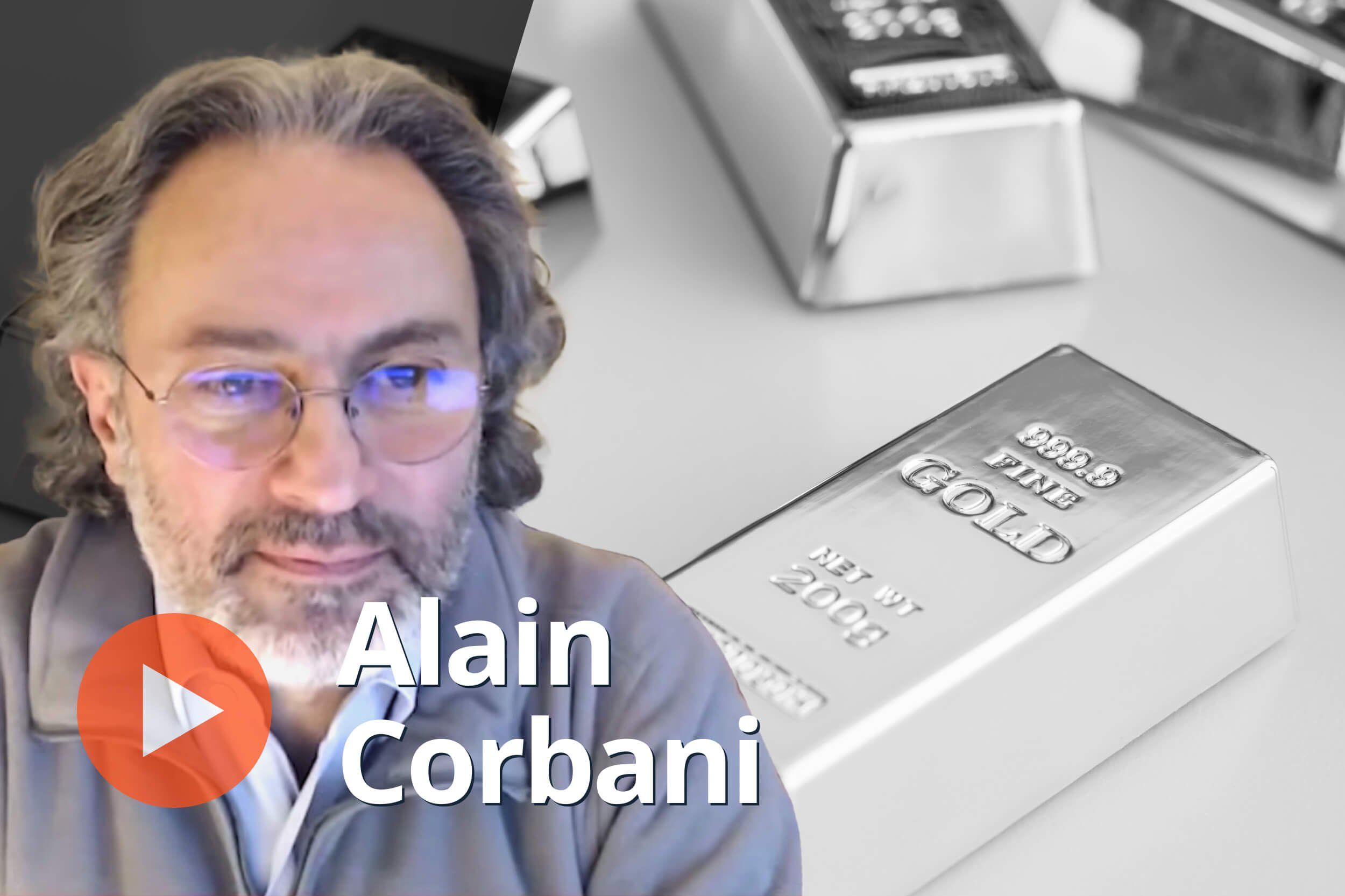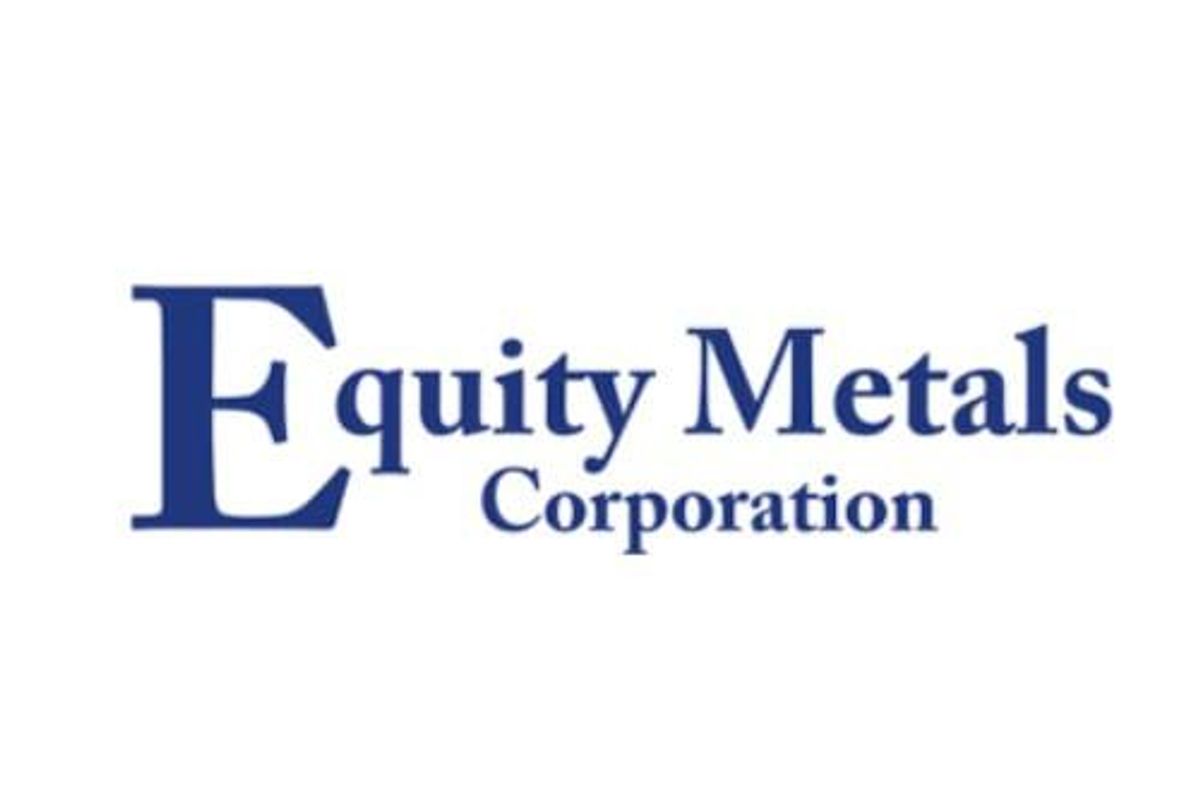
July 11, 2024
Golden Deeps Ltd (ASX: GED) has entered into a binding Heads of Agreement (HOA) to earn an 80% interest in the holders of four granted and highly-prospective exploration licences in the world class Lachlan Fold Belt Copper-Gold Province of NSW (see Figures 1, 2 and 3).
- Under the HOA with Acros Minerals Pty Ltd (Acros) and Crown Gold Resources Pty Ltd (Crown), Golden Deeps will reimburse $179,263 previous exploration expenditure, and earn an 80% interest by spending $300,000 on exploration within three years (see Significant Terms, Appendix 1).
- The Acros and Crown tenements in the Lachlan Fold Belt straddle the boundary between the Siluro-Devonian Hill End Trough - which hosts the Hill End and Hargreaves goldfields (2Moz historic production1) - and the Rockley-Gulgong Volcanic Belt, which is highly prospective for porphyry copper-gold deposits (see Figure 1). Major deposits in the Lachlan Fold Belt include the world-class Cadia-Ridgeway deposit (456Mt @ 0.83 g/t Au, 0.24% Cu endowment2).
- Golden Deeps is currently drilling at the Havilah Copper-Gold Project (EL8936) within the Rockley-Gulgong Volcanic Belt to test a series of porphyry/volcanics hosted copper-gold targets at the Hazelbrook prospect3 (see location, Figure 1 and magnetics with key targets, Figure 2).
- Targets within the Acros (EL9114, EL9069 & EL9118) and Crown (EL9060) tenements include:
- Extensions of the Sofala Volcanics south of the Havilah Project. Magnetics indicate continuity of the highly-prospective volcanics and intrusives which project south under Permian cover into EL9114. No previous work has tested the underlying volcanics and/or the intrusive boundary (see Figures 1 and 2).
- Extensions of the Rockley-Gulgong belt along the Mudgee Fault (Figure 1), which includes the mineralised Sofala Volcanics and buried porphyry intrusion targets, into EL9069 and EL9060 north of the Havilah tenement (see Figures 1 and 2).
- Extensions of the Hargreaves and Tuckers Hill high-grade gold trends north into EL9118 (see Figure 1).
- The Company will build on previous work which has shown that the mineralised Sofala Volcanics and porphyry Cu-Au targets are present on EL9114 and EL9069. Planned work includes further geophysical surveys (detailed gravity, magnetics & Induced Polarisation), with a focus on extensions of the Rockley-Gulgong belt south and north of the Company’s projects (Figure 2).
- This work will aim to define drilling targets targeting major porphyry/volcanics hosted copper gold deposits in an area which has received limited exploration due to shallow cover.
Golden Deeps CEO Jon Dugdale commented:
“This HOA gives Golden Deeps access to extensions of mineralised volcanics and intrusives within the Rockley-Gulgong Volcanic Belt. This belt is highly prospective for major porphyry/volcanic hosted copper gold discoveries and is a similar setting to major deposits such as the world-class Cadia-Ridgeway mine.
“The Acros and Crown tenements also include extensions to the Hill End gold corridor which has produced over two million ounces of gold.
“We now look forward to immediately advancing geophysical programs to define drilling targets south and northwest of the Company’s Havilah Project, where drilling is currently testing copper-gold targets which continue under cover into the Acros and Crown ground.”


About the Acros and Crown Tenements
Acros holds three exploration licences (EL9114, EL9069 and EL9118) and Crown one exploration licence (EL9060) near Mudgee in the Eastern Lachlan Fold Belt region of NSW (see Figure 1 for locations). Details of the tenements are shown in Table 1 below:
Table 1: Acros and Crown Tenements expenditure and commitments:
The Acros and Crown tenements are located close to the eastern margin of the Lachlan Fold Belt and straddle the boundary between the Siluro-Devonian Hill End Trough - which contains the Hill End gold field (2Moz produced), and the Rockley-Gulgong Volcanic Belt which is highly prospective for porphyry related copper-gold deposits (see Figure 1).
In the eastern tenements (EL9114, EL9069 and EL9060), the Company is targeting porphyry/volcanic hosted copper-gold mineralisation in a belt of Ordovician age (Sofala) volcanic rocks in the Rockley Gulgong Volcanic Belt. This belt is part of the Macquarie Arc in the Lachlan Fold Belt - a major geological province known for world-class copper-gold deposits such as Cadia-Ridgeway2 and North Parkes4 (see Figure 3, below). These major deposits are hosted by Ordovician volcanic rocks and associated with “porphyry” intrusives and sit within parallel volcanic belts to the west of the Rockley-Gulgong Belt.
Click here for the full ASX Release
This article includes content from Golden Deeps, licensed for the purpose of publishing on Investing News Australia. This article does not constitute financial product advice. It is your responsibility to perform proper due diligence before acting upon any information provided here. Please refer to our full disclaimer here.
The Conversation (0)
7h
Harvest Gold Identifies Significant AU-AG-CU Halo Associated With The Structural / Magnetic Feature On Mosseau
(TheNewswire) Vancouver, British Columbia / January 8, 2026 ‑ TheNewswire - Harvest Gold Corporation (TSXV: HVG,OTC:HVGDF) ("Harvest Gold" or the "Company") is pleased to announce the second series of assay results from its maiden drill program at its Mosseau property in the Urban Barry Belt in... Keep Reading...
19h
Alain Corbani: Gold to Hit US$5,000 Near Term, What About Silver?
Alain Corbani, head of mining at Montbleu Finance and manager of the Global Gold and Precious Fund, sees the gold price reaching US$5,000 per ounce in the near term. He sees real interest rates and the US dollar as the key factors to watch, but noted that other elements are also adding... Keep Reading...
06 January
Aurum advances Boundiali development with 3 ML Applications
Aurum Resources (AUE:AU) has announced Aurum advances Boundiali development with 3 ML ApplicationsDownload the PDF here. Keep Reading...
06 January
Peruvian Metals Full Capacity Throughput at Aguila Norte Processing Plant in 2025 and Focuses on Silver and Gold for 2026
Peruvian Metals Corp (TSXV: PER,OTC:DUVNF) (OTC Pink: DUVNF) ("Peruvian Metals" or the "Company") is pleased to announce production results for 2025 at its 80-per-cent-owned Aguila Norte processing plant ("Aguila Norte" or the "Plant") located in Northern Peru. The Company is also pleased to... Keep Reading...
Latest News
Interactive Chart
Latest Press Releases
Related News
TOP STOCKS
American Battery4.030.24
Aion Therapeutic0.10-0.01
Cybin Corp2.140.00






